
Two Jaw Surgery, or Orthognathic Surgery, is a specialized surgical procedure to correct structural issues with the upper and lower jaws. This surgery involves realigning the jawbones to improve bite, jaw function, and facial appearance. It is often performed when the jaw is misaligned due to congenital conditions, trauma, or developmental abnormalities. The surgery can involve repositioning the upper jaw (maxilla), lower jaw (mandible), or both, depending on the specific alignment issues and desired outcomes.
Importance of Correcting Jaw and Bite Issues
The importance of Two Jaw Surgery extends beyond mere aesthetics. Misaligned jaws can lead to various functional problems, including chewing, speaking, and breathing. Conditions such as an overbite, underbite, or crossbite can significantly affect daily life, cause discomfort, and result in uneven wear on teeth. Correcting these misalignments, Two Jaw Surgery enhances facial symmetry and appearance and improves oral function and health. For many patients, this surgery can lead to a significant improvement in quality of life and self-confidence.
What is Two Jaw Surgery?
Two-jaw surgery, clinically known as orthodontic surgery, is a surgical procedure designed to correct significant discrepancies in the alignment of the upper and lower jaws. This surgery involves repositioning the jawbones to achieve a more functional and aesthetically pleasing alignment. The procedure is typically recommended for patients whose jaw misalignment cannot be effectively treated with orthodontics alone.
The surgery is performed by an oral and maxillofacial surgeon, who uses advanced imaging techniques and surgical planning to reposition the jaws precisely. The bones are usually secured with plates and screws, allowing them to heal in the corrected position. Two Jaw Surgery can address a range of issues by altering the upper jaw (maxilla) and lower jaw (mandible) position to improve bite, function, and facial balance.
Best Candidates for Two Jaw Surgery
Two Jaw Surgery is commonly suggested or performed for those who have conditions related to jaw misalignment and bite issues, including:
- Overbite: It is a condition in which the upper front teeth significantly overlap the lower front teeth. This can cause problems with chewing and speech and contribute to wear and tear on the teeth.
- Underbite is a condition in which the lower front teeth extend beyond the upper front teeth. It can lead to difficulties in biting and chewing and may affect speech and facial aesthetics.
- Crossbite: Occurs when some of the upper teeth bite inside the lower teeth, which can cause uneven wear, gum disease, and misalignment of the teeth and jaws.
- Open Bite: A condition with a vertical gap between the upper and lower teeth when the mouth is closed. This can affect biting and chewing efficiency and may impact speech.
- Jaw Asymmetry: The left and right sides of the jaw do not match, leading to facial imbalance and potential functional issues.
Receding or Protruding Jaw: Conditions in which the jaw is positioned too far back or too far forward, affecting facial harmony and bite function.
Impact on Functionality
The functionality of the jaw is significantly impacted by conditions that Two Jaw Surgery aims to address:
- Chewing and Eating: Misaligned jaws can make biting and chewing food properly difficult, leading to discomfort and inefficient digestion. Correcting the jaw alignment improves the ability to chew food effectively, reducing strain on the teeth and jaws.
- Speaking: Jaw misalignment can affect speech clarity and articulation. Two jaw surgeries can realign the jaws, improve speech function, and help resolve issues such as lisping or difficulty pronouncing certain sounds.
Jaw Pain and Discomfort: Many patients experience chronic jaw pain or discomfort due to misalignment or TMJ disorders. Correcting the jaw position can alleviate this pain and reduce associated symptoms.
Aesthetic Improvements
In addition to functional benefits, Two Jaw Surgery also provides significant aesthetic improvements:
- Facial Symmetry: Correcting jaw alignment often enhances facial symmetry, producing a more balanced and harmonious appearance. This can improve self-confidence and overall facial aesthetics.
- Profile Enhancement: Surgery can help achieve a more proportionate facial profile for individuals with prominent or recessed jaws. This can address concerns such as a protruding chin or a sunken appearance.
- Smile Appearance: Realigning the jaws can improve the alignment of the teeth, leading to a more attractive and confident smile. This can also enhance the overall appearance of the lips and mouth.
By addressing these issues, Two Jaw surgeries improve functional aspects such as chewing and speaking and enhance the patient’s overall facial aesthetics and self-esteem.
How is Two Jaw Surgery Performed in South Korea?
The journey to Two Jaw Surgery begins with an initial consultation with an oral and maxillofacial surgeon. During this visit, the surgeon will conduct a comprehensive evaluation, including a review of the patient’s medical history, current symptoms, and specific concerns. This may involve a physical examination of the jaws and teeth and discussions about the patient’s goals and expectations. Diagnostic tools, such as X-rays and photographs, are used to assess the jaw alignment and determine the need for surgery.
During the Two Jaw Surgery Procedure
Two Jaw Surgery is typically performed under general anesthesia, meaning the patient will be asleep and pain-free throughout the procedure. The surgery involves repositioning the upper and lower jaws to correct alignment issues. The surgeon makes precise cuts in the jawbones to reposition them into the desired alignment. Once the jaws are correctly aligned, they are secured in place using plates, screws, or other fixation devices. The procedure may take several hours, depending on the complexity of the case.
Incisions for Two Jaw Surgery are usually made inside the mouth so there are no visible external scars. The surgeon may also use external incisions in cases where access to the jawbones is more challenging. The techniques will depend on the type and extent of the jaw correction needed. Common techniques include osteotomies (bone cuts) and repositioning with fixation devices to ensure stability during the healing process.
The duration of the surgery varies based on the case’s complexity, but it generally lasts between 2 to 6 hours. After the surgery, the patient will typically stay in the hospital for 1 to 3 days to monitor their recovery and manage any immediate postoperative issues. The length of the hospital stay can vary depending on the patient’s overall health, the complexity of the surgery, and any complications that may arise.
Post-Surgery Care
- Recovery Process and Timeline The recovery process begins immediately after the surgery. Patients may experience swelling, bruising, and discomfort during the initial days. The surgeon will provide detailed post-operative care instructions, including how to manage swelling and pain. Full recovery can take several weeks to months, during which the patient must follow a modified diet and avoid strenuous activities. Follow-up visits with the surgeon and orthodontist will be scheduled to monitor progress and make any necessary adjustments.
- Pain Management and Swelling Reduction Pain management is an important aspect of post-surgery care. The surgeon will prescribe medications to control pain and discomfort and recommend over-the-counter pain relievers as needed. Ice packs and head elevation can help reduce swelling. Patients must adhere to the prescribed pain management plan and follow specific instructions for reducing swelling and promoting healing.
Dietary Restrictions and Oral Hygiene After surgery, patients will need to adhere to a soft or liquid diet to avoid straining the healing jaws. Foods such as soups, smoothies, and mashed potatoes are commonly recommended. Proper oral hygiene is also crucial to prevent infection and promote healing. Patients should use a soft-bristled toothbrush and follow any specific cleaning instructions provided by their surgeon. Regular follow-up appointments will help ensure that the healing process is progressing as expected and that any issues are promptly addressed.
Recovery and Rehabilitation
The recovery timeline for Two Jaw Surgery varies from patient to patient, but a general outline includes:
- Immediate Post-Surgery (First 1-3 Days): Patients typically spend 1 to 3 days in the hospital following the surgery. During this period, the focus is on managing pain swelling and monitoring for immediate complications.
- Initial Recovery (First 1-2 Weeks): Swelling and bruising are most pronounced during the first week. Patients follow a soft or liquid diet to avoid straining the healing jaws. Pain and discomfort are managed with prescribed medications.
- Intermediate Recovery (3-6 Weeks): Swelling and bruising begin to subside, but some residual discomfort and stiffness may persist. Patients start to slowly reintroduce solid foods as tolerated and continue with oral hygiene practices.
- Full Recovery (3-6 Months): Most patients return to normal activities within 6 to 8 weeks, but complete healing of the jawbones and soft tissues can take up to 6 months. During this period, follow-up appointments will monitor progress and ensure the jaws are healing correctly.
What to Expect During the Recovery Period
- Swelling and Bruising: After surgery, significant swelling and bruising around the face and jaw are common. This typically peaks within the first few days and gradually improves over the next few weeks.
- Pain and Discomfort: While pain is manageable with prescribed medications, patients may experience varying levels of discomfort. Adhering to pain management strategies and following the surgeon’s instructions is crucial.
- Dietary Restrictions: Patients will initially be on a soft or liquid diet. As recovery progresses, they may slowly reintroduce more solid foods based on their comfort level and surgeon’s recommendations.
- Oral Hygiene: Maintaining oral hygiene is essential to prevent infection and promote healing. Patients should use a soft-bristled toothbrush and follow any specific cleaning instructions the surgeon provides.
- Follow-Up Visits: Regular follow-up visits with the surgeon and orthodontist are critical for monitoring recovery and ensuring proper alignment. These appointments allow the healthcare team to assess healing, adjust dental appliances, and address concerns.
Average Costs of Two Jaw Surgery in South Korea
The cost of Two Jaw Surgery can vary widely based on several factors. In South Korea, where many advanced and affordable options for this surgery are available, the average costs are generally lower compared to other countries. Costs include various components such as surgical fees, hospital stay, anesthesia, and pre-and post-operative care. South Korea is known for its high-quality medical services and competitive cosmetic and reconstructive surgery pricing.
Ready to Transform Your Smile and Enhance Your Jaw Function?
Contact us today to learn how we can assist you with your Two Jaw Surgery journey. Discover personalized care, transparent costs, and exceptional support. Your path to a healthier, more confident smile starts here!

